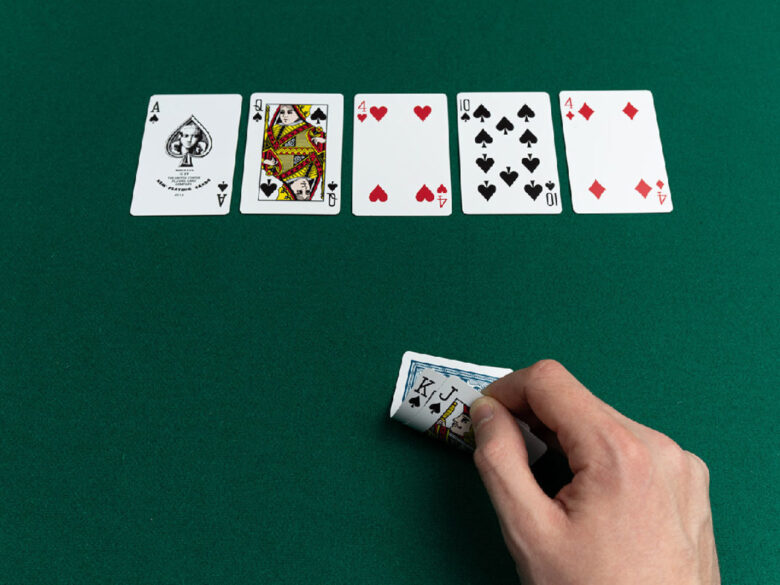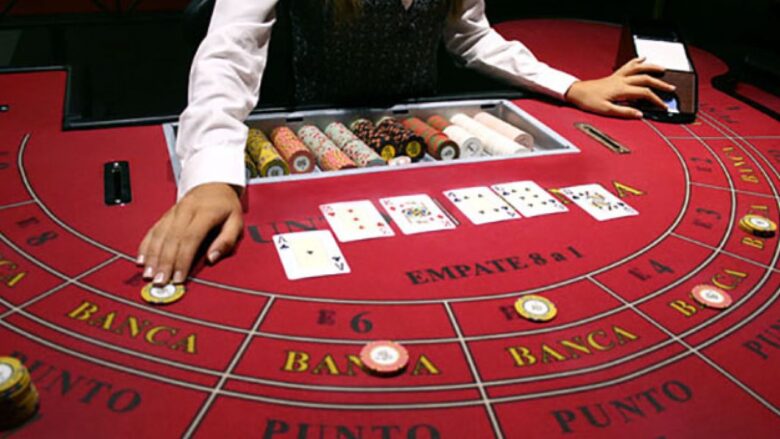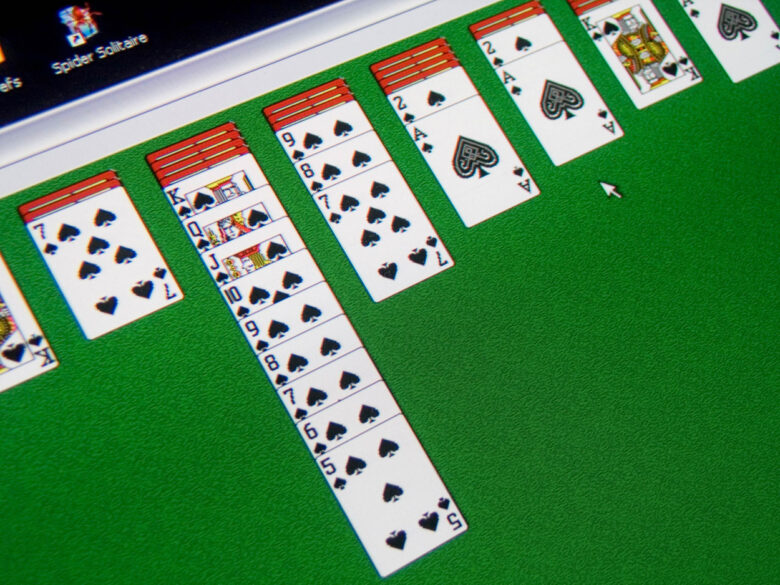From royal courts to your kitchen table, playing cards have been a source of entertainment for centuries and across cultures. Thousands and thousands of games can be played with the standard deck of 52 playing cards, but how did these cards come to be? In this article, we’ll examine the history of playing cards and some of the most popular games you can play with them.
Contents
Card Games in the 21st Century
The enduring popularity of traditional playing cards has led to many variations over the years. These days, there are countless games you can play involving cards, from the family-friendly Uno! to party games like Exploding Kittens and Cards Against Humanity to complex, fantasy-based games like Magic: The Gathering. Japan has also produced some immensely popular franchises that include trading cards, such as Pokemon and Yu-Gi-Oh!, both of which have made millions of dollars and become household names all over the world.
The emergence of the internet has also given us more opportunities to play traditional card games. Games like blackjack, poker, and baccarat can all be played online from home on casino sites like playstar.com, including live dealer games, where a real dealer hosts and runs the game rather than a software algorithm. This can give players an extra level of immersion and excitement, and let them play against other real people — all without leaving the sofa!

Source: apartmenttherapy.com
A History of Playing Cards
Although historians can’t trace the invention of playing cards to a specific date, it is believed that they first appeared in the 9th Century in China, during the rule of the Tang Dynasty. Like the playing cards that we are used to, these cards (or rather, tiles) included suits and values and were used for a variety of games. Some of these games even shared similarities with popular card games today.
The concept of playing cards is believed to have then spread to India, Persia (now Iran), and Egypt. However, some historians dispute this, and believe that they may have originated in India or Arabia in the first place! Whatever their origins, playing cards eventually spread to Europe. This is where the modern deck of cards as it is recognised today began to emerge in the 14th and 15th Centuries.
The suits, face values, and designs of the cards evolved over time and varied across different parts of the continent, as well as the numbers of cards used. For example, in Russia, decks often contain 36 cards. Some German and Austrian packs include as few as 32, while 40- or 48-card packs are common in Italy and Spain. However, the 52-card deck that most of us recognise today is the most popular deck internationally, and was developed in France.
The French deck of cards also codified the four suits (hearts, diamonds, clubs, and spades), added the queen and standardised the designs, and can be said to be the earliest example of the “modern” deck of playing cards.
What is the Meaning of Each Suit?
The symbols on playing cards are often known as “pips”, and were once more variable depending on culture and location. However, the modern French deck is by far the most popular, as the heart, diamond, club, and spade motifs are recognisable and easy to draw.
Some believe that each suit represents a different class of society — hearts the clergy, diamonds merchants and tradesmen, clubs peasants, and spades (formerly swords) soldiers. However, others believe that there isn’t such a literal interpretation of each symbol.
While the suits’ connections to layers of medieval society are uncertain, the medieval origins of the modern French deck are apparent in the representation of kings and queens. The jack is often considered to represent a page or servant of a knight.
7 Popular Card Games
According to i-p-c-s.org, there are believed to be between 1,000 and 10,000 known games that can be played with the traditional deck of cards.
1. Poker

Source: upswingpoker.com
One of the most popular casino games, poker originated in the US in the early 19th Century and has since evolved into many variations. The game was originally played in small groups but has since transformed into a global phenomenon, only furthered by the rise of online gaming.
Perhaps what makes poker so popular is that it involves strategy, skill, and luck — and it also lends itself particularly well to betting. While there are many variations of poker, they all involve similar mechanics of concealing your deck of cards and fooling other players, and the winner is determined by their ranks and combinations of cards. For more details on how to play poker, wikihow.com gives a useful guide.
2. Blackjack
Also known as “21”, blackjack has roots in the 17th Century in French casinos, and is now one of the most popular card games in the world. Like poker, blackjack has embraced the digital age, making it accessible to a wider audience.
The game involves a dealer and one or more players. Each player takes turns to try to beat the dealer’s hand without going over 21. Players are dealt two cards and can choose to “hit” (take additional cards) or “stand” (hold their total).
3. Baccarat

Source: usaonlinecasino.com
With origins dating back to the Middle Ages, Baccarat developed in Italy and France before becoming a popular game in casinos around the globe. The surge of online gaming platforms has brought Baccarat to a wide audience.
Baccarat is played between the “player” and the “banker.” Each round has three possible outcomes — player, banker, or tie. Variations like Punto Banco, Chemin de Fer, and Baccarat Banque all offer slightly different gameplay dynamics.
4. Rummy
Rummy evolved from a Mexican game called Conquian in the early 20th Century. It’s one of the most popular card games due to its combination of skill and luck, and its relatively simple rules.
The game involves forming sets, or “runs” of cards. Although there are different variations, including Gin Rummy and Indian Rummy, they all follow this basic premise.
5. Solitaire

Source: sciencetimes.com
You may be familiar with Solitaire due to the digital version included with Windows operating systems in the 1990s and 2000s. However, it dates back much further than that — it originated in the Baltic region of Europe and made its way to France in the late 18th Century. Solitaire is a single-player game, and has variations like Klondike, Freecell, and Spider.
6. Bridge
Bridge is another straightforward game, and it evolved from the game Whist in the late 19th Century. Bridge consists of three different phases — the bidding, playing, and scoring stages. There are different variations of the game, including Contract Bridge, Duplicate Bridge, and Rubber Bridge.
7. Go Fish

Source: cardgames.io
Perhaps the simplest game on this list, Go Fish is believed to have been invented in the 19th Century as a way to introduce children to card games. In Go Fish, players aim to collect sets of four matching cards by asking opponents for specific cards.
It’s worth remembering that the rules of most popular card games can vary based on region, house rules, or even the traditions of the family or group you’re playing with! If in doubt, it can be a good idea to clarify the rules with your group before you start playing the game.
Clearing the Table
Card games have been popular for centuries, from ancient China to the modern day. The rise of the internet has also made it easier than ever before (in fact, you don’t even need to own a set of cards!) to play a variety of card games from Go Fish to Texas Hold’em.
Despite advances in technology and gaming, the traditional deck of cards remains hugely popular all over the world, and this seems unlikely to change. In fact, the emergence of the internet has increased the popularity of games like poker and blackjack, and there are even virtual reality card games available now. It seems difficult to imagine the popularity of playing cards declining any time soon.
